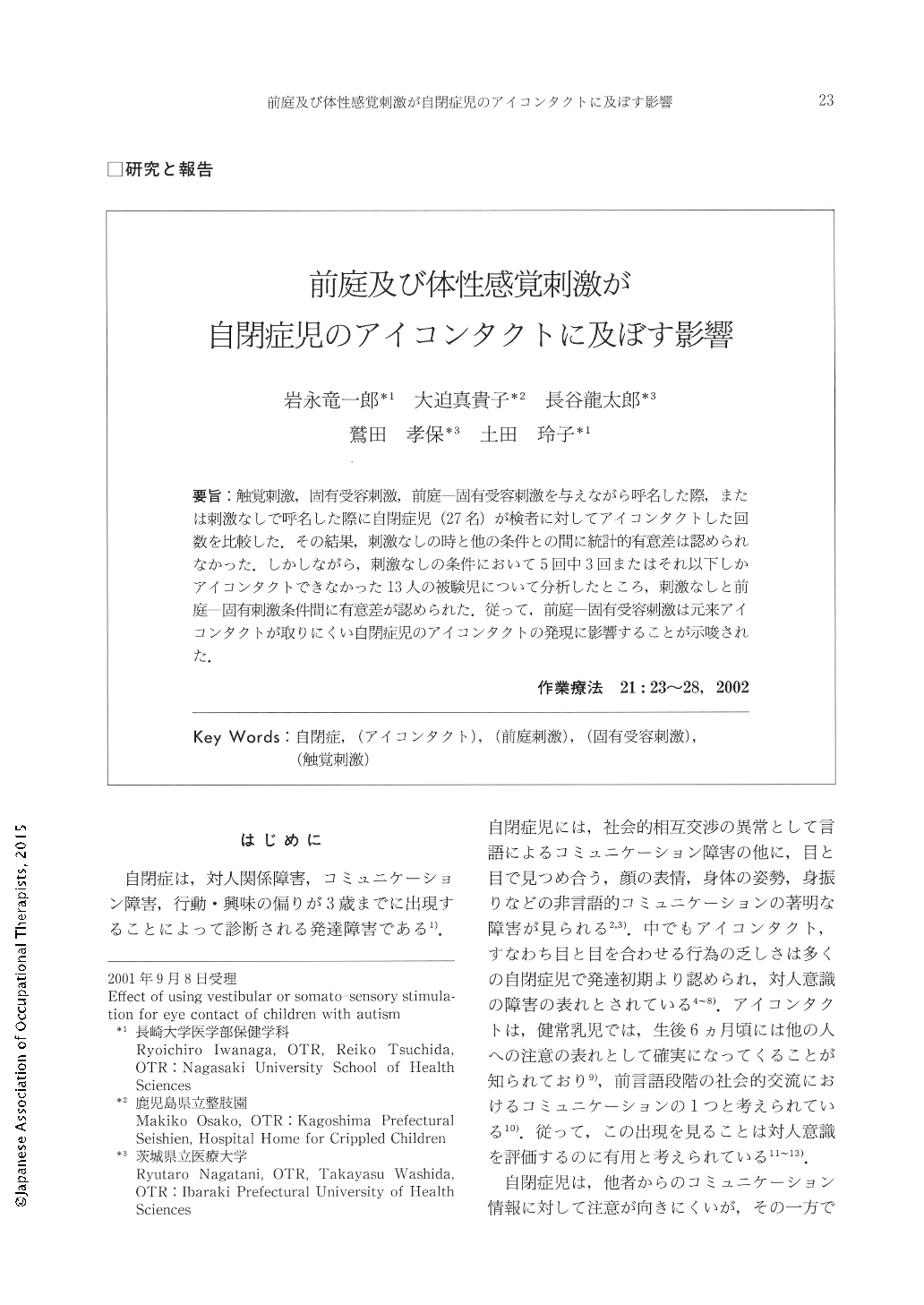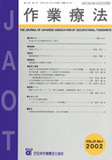Japanese
English
- 販売していません
- Abstract 文献概要
- 1ページ目 Look Inside
- 参考文献 Reference
- サイト内被引用 Cited by
要旨:触覚刺激,固有受容刺激,前庭—固有受容刺激を与えながら呼名した際,または刺激なしで呼名した際に自閉症児(27名)が検者に対してアイコンタクトした回数を比較した.その結果,刺激なしの時と他の条件との間に統計的有意差は認められなかった.しかしながら,刺激なしの条件において5回中3回またはそれ以下しかアイコンタクトできなかった13人の被験児について分析したところ,刺激なしと前庭—固有刺激条件間に有意差が認められた.従って,前庭—固有受容刺激は元来アイコンタクトが取りにくい自閉症児のアイコンタクトの発現に影響することが示唆された.
The number of eye contacts made by children with autism (n = 27), under different conditions of sensory stimulus was compared. The types of sensory stimulation given were: 1) tactile 2) proprioceptive 3) vestibular-proprioceptive and 4) no specific stimulation (ie., controlled). Each child was successively provided with a randomly selected sensory condition (5 a total of times for each condition) . While sensory stimuli were provided, the child was called by his/her name. The number of eye contacts was recorded for each child and each trial. The statistically analyzed data showed no significant difference between the controlled trials and other stimulatory trials. However, a subsample of 13 children, whose number of eye contacts in the controlled trials recorded as a 3 or less than three times showed significant difference between the controlled and vestibular-proprioceptive trials. The results suggested that provision of vestibular-proprioceptive stimulation enhances eye contact of autistic children with lower function of eye contact abilities.

Copyright © 2002, Japanese Association of Occupational Therapists. All rights reserved.


